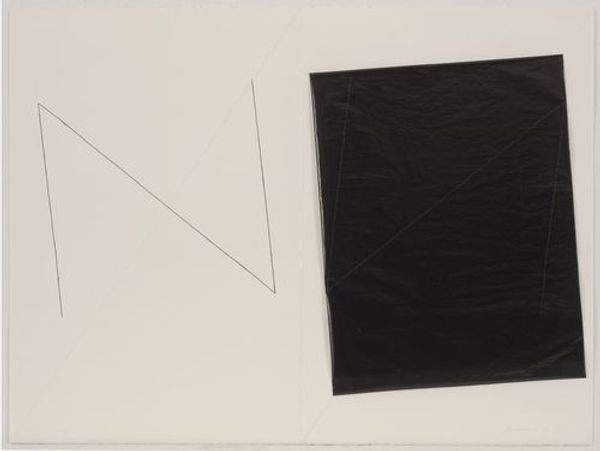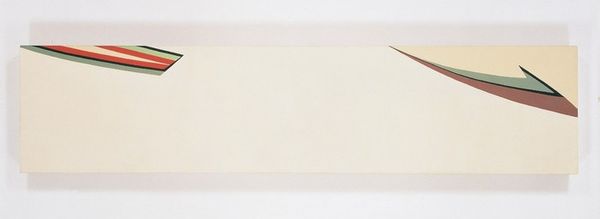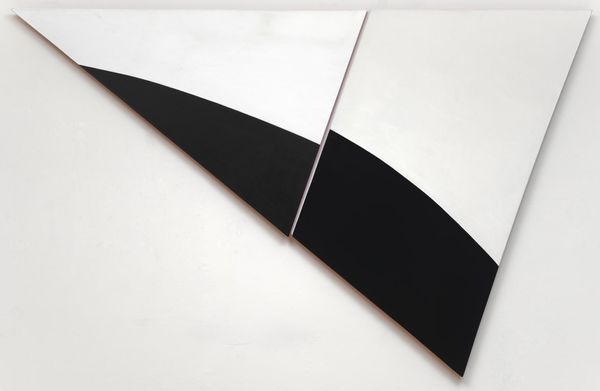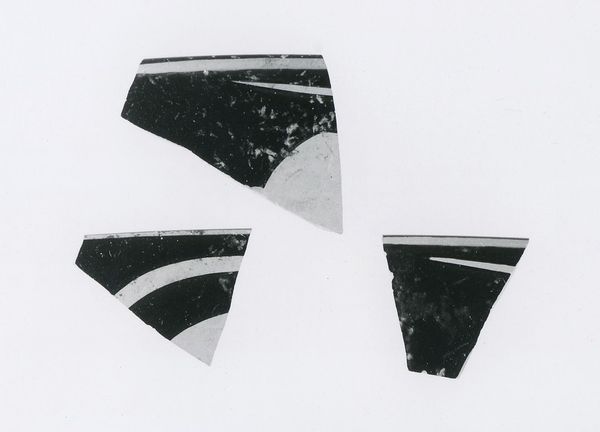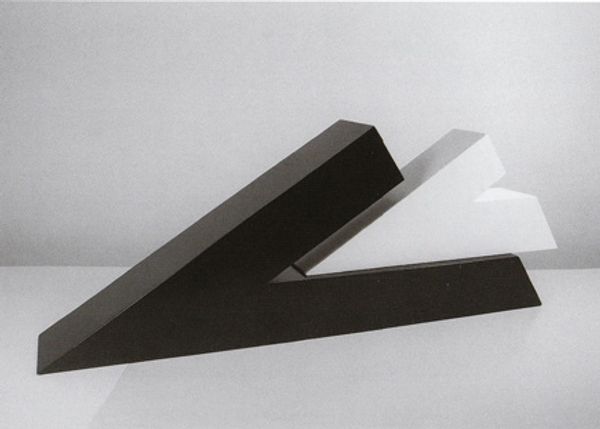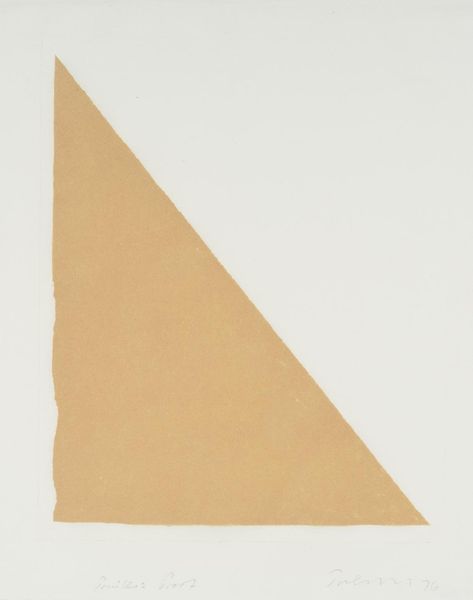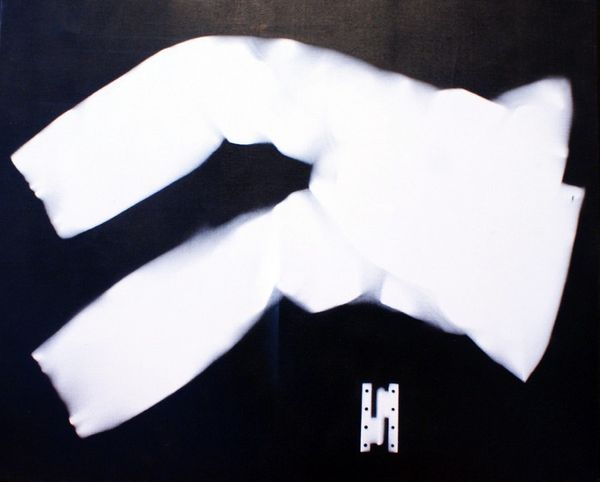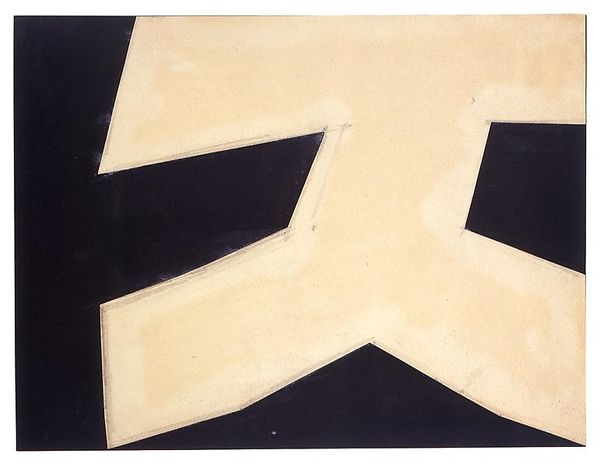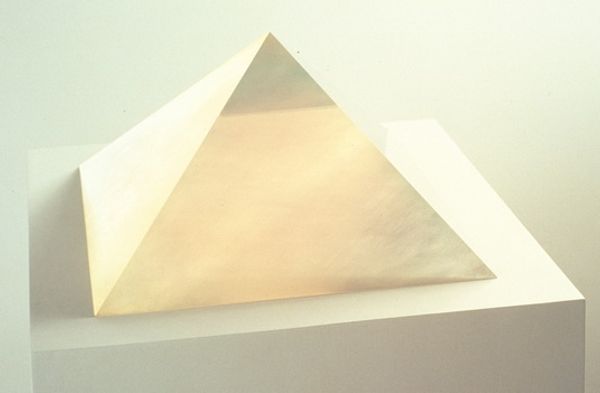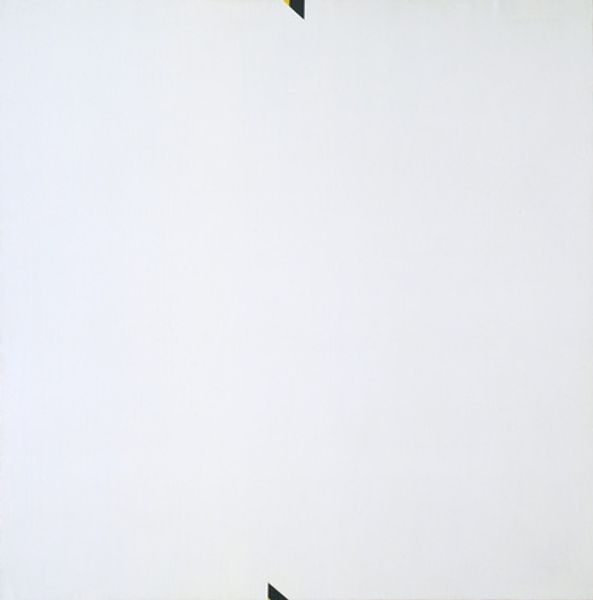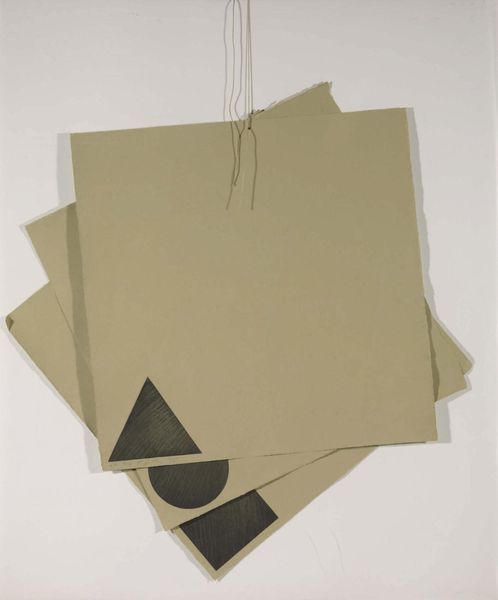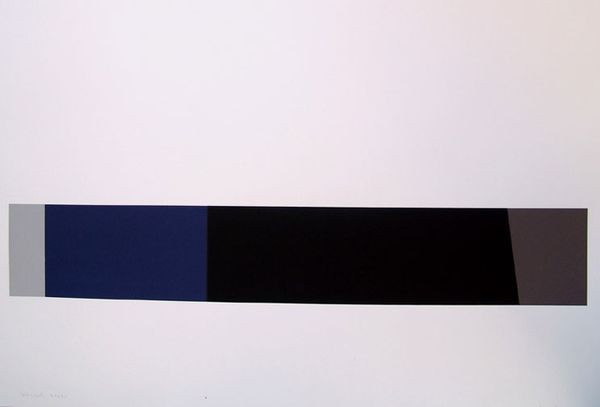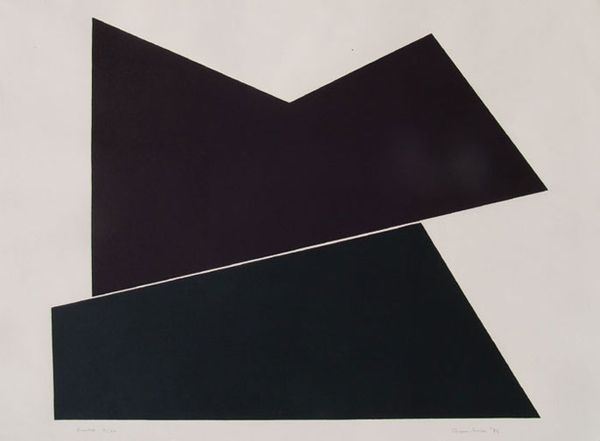
Dimensions: support: 298 x 500 mm
Copyright: © Valerie Large | CC-BY-NC-ND 4.0 DEED, Photo: Tate
Curator: Valerie Large’s work, "Space Cut," seems to use only paper, yet it feels like peering into another dimension, doesn’t it? Editor: Absolutely. It’s so stark and dramatic—like a visual poem, the geometry feels almost confrontational, inviting a meditation on absence and form. Curator: It's interesting that you say that. Words like "void" and "overturning" are actually inscribed onto the paper, which adds layers to the piece's engagement with the tensions between text and image. Editor: "Void," yes. It's calling to mind ideas around minimalism and conceptual art. It's like the paper is both the subject and the object, inviting us to consider negative space and the politics of subtraction. Curator: Precisely. And in a world saturated with imagery, the monochrome palette and calculated simplicity read as a powerful critique of visual excess. Editor: I love how it manages to evoke depth with such limited means, it makes me think about how a single gesture can hold so much meaning. Almost like a zen koan. Curator: It's truly a testament to the artist's mastery of form. Editor: It really is. It's a small piece, but it's also deeply affecting.
Comments
Join the conversation
Join millions of artists and users on Artera today and experience the ultimate creative platform.
tate 7 months ago
⋮
Space Cut by Valerie Large is one of the eight printed works in Tetrad Pamphlets Vol.II. Tetrad Pamphlets consists of eight fold-out paper pamphlets in a grey cardboard box. The pamphlets occupy the middle ground between artist's book and free-standing print work. They were printed in an edition of one hundred and twenty five and the Tate copy is unnumbered and unsigned. The box also included work by Ian Tyson (born 1933), Jerome Rothenberg (born 1931), Richard Johnny John (dates unknown), Ian Breakwell (born 1943), Tom Phillips (born 1937), Richard Pinkney (born 1938), Donato Cinicolo (dates unknown) and Christian Wolff (born 1934). They were published by the small London based Tetrad Press from which they took their name. Tetrad Press also published a number of artist's books and collaborations, as well as an earlier volume of Tetrad Pamphlets. Volume I (Tate P01688-P01697) appeared in 1971, featuring ten works in pamphlet format by Derrick Greaves (born 1927), Tom Phillips, Richard Pinkney and Ian Tyson. Tetrad Press was founded in 1969 by the artist and publisher Ian Tyson for the purposes of developing a new relationship between contemporary art and literature. To begin with Tetrad concentrated on collaborations between visual artists and poets. The first work published was a five page folio, The 17 Horse Songs of Frank Mitchell X-X111 1969-70 (Tate P05258-P05261), a collaboration between Tyson and his close friend the American experimental poet Jerome Rothenberg. The press gradually broadened its scope to include musical scores, books, prose texts, and concrete poetry, as well as works by individual artists. The 1960s had seen a growing interest in the possibilities offered by printmaking techniques, and artists were keen to explore connections between word and image, literature and art. The artist's book offered another medium through which to explore these relationships. As Ian Tyson commented: 'it is partly the sequential nature of the book that interests me, the conception of the pages being each one a facet of the whole and that of the work being slowly revealed as one moves from one to the other.' (Quoted in unpublished Tate manuscript.) Valerie Large's Space Cut combines three-dimensional, sculptural form with poetic text and so challenges the traditional, two-dimensional structure of the book. It also demands reader participation. Inside the black card cover is a single sheet of white paper that has been cut and folded to create a rotating, triangular form that is flat when closed and pops up when opened. The pop-up form is printed with instructions on how it should be manipulated and scattered words referring to space, light, movement and the void. In order to view the work fully, the spectator has to turn the object, so revealing spaces and words which would otherwise remain hidden. On completing the movement, a hole opens up in the centre of the object through which the word 'void' can be seen. The work has to be viewed sequentially and therefore has a temporal dimension.
